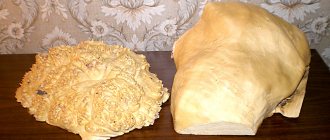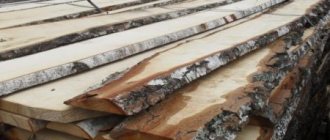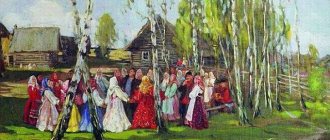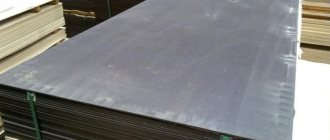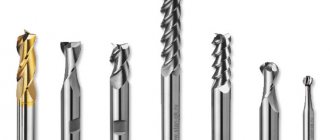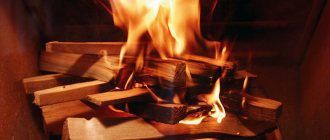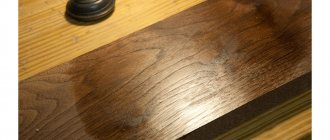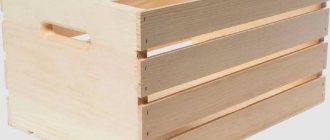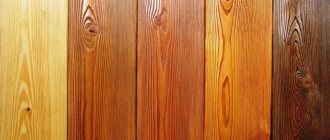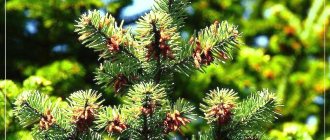An original solution for the creative ideas of wood craftsmen is to create decor or souvenir products using birch burl or souvel. These materials differ from other wood in the uniqueness of their cut pattern.
A birch burl is a growth on a tree, from which thin tree branches protrude, with buds formed on them. It has a very high density, even higher than that of the tree trunk itself. The pattern on the cut of the burl is original and unique. Tree growth rings are intertwined with dotted inclusions and create a unique pattern.
Processing birch burl with your own hands is not easy due to the high hardness of the material. After processing, the product resembles malachite and is cast with mother-of-pearl. The color of the pattern is milky with black and brown shades.
Suvel grows on a tree due to its disease or damage and grows much faster than burl. This material is softer and more pliable than burl in processing. It has unique patterns reminiscent of marble, which are formed due to its position on the tree.
What it is?
Suvel (svil) is a rounded growth on the trunks of birch trees. May also occur in other breeds. It grows quite quickly. Consists of twisted or deformed wood fibers. Suveli can be located around the tree or in groups on one section of the trunk.
This material is usually harvested in windfall areas or at sawmills. The nature of the formation of growths is still not completely known. Some argue that this is due to an external influence on the tree trunk or a disease, as a result of which a hall is formed, which after some time becomes overgrown with fibers.
How we mined suvel
Do you know what suvel is? Do you love suvel as much as I love it?
I’ll tell you: suvel is a growth on a tree, quite rare, it is formed as a result of trauma to the trunk and can be located at different heights of the tree. It grows for several decades and has different bizarre shapes. When cut, suveli wood is quite beautiful; the intertwined fibers create a bizarre pattern. It is quite rare. And they use suvel for all sorts of beautiful crafts - bowls and goblets, pendants, knife handles, and various figurines.
After a week of cold rains, it was a day without precipitation. So, the car's tank is filled, the chainsaw is in the trunk, and my wife and I hit the road around the neighborhood.
Our place is a hilly plain with forests, groves and copses, interspersed with fields, and you can’t do it without an SUV.
We live in the village of Bolshoye Boldino. Boldino autumn is about us. This is the vicinity of the Resolud forest, mentioned by Alexander Pushkin in Dubrovsky. Hear: rezo-lyud - the robbers were playing around there. Nearby, in the village of Pokrovskoye, large fairs were held, where trading people gathered. And through the forest, with their pockets full after a successful trade, they returned home - there was no other way. Well, who made it home and who didn’t.
Here it is, Pokrovskoye, below, behind the hills and ravines.
Luck smiled in the first copse. A not very large suvel on a birch broken by the wind at a height of about 4 meters.
We managed to get close enough thanks to the wise guidance of my wife. And they immediately got down to business.
Some initially wanted to sit out, or rather, stand in the bushes.
But then my conscience woke up - they provided help.
Since the new Duma law allowed us to collect dead wood and hunt with a bow in the forest, we did not break the law, and a broken birch tree is almost dead wood.
A little more, and our suvel safely migrated to the car.
We can say that the trip was already a success, but I decided to continue the search in another forest area and in a neighboring republic, fortunately it is only a few kilometers away.
And here luck did not turn away. On the outskirts of the forest I found two more suvels, quite large and old. One is on a very old birch tree and quite high.
Cutting down such a tree entirely is quite problematic, and the country is different, you could be asking for big trouble. The growth on the other birch is slightly lower, and you can cut it out without knocking down the whole tree. It looks like someone already discovered it 20-30 years ago: a rotten ladder made of thick branches was leaning against a birch tree. But the problem arose from the fact that it is impossible to get there because of the ravines, and the suvel itself is about fifty kilograms by eye, and you can’t do it without a ladder. So we will have to postpone the extraction of this suveli - besides, it’s raining again, so we need to prepare.
The autumn day is approaching evening. We had a great time. Flora sends us her last greetings from the summer.
The sun is also not far behind: it didn’t work out in the summer, so at least I’ll try now...
And he tries to decorate the autumn forest as best he can.
But the matter did not end there. On the way home, happy with the walk and the souvel in the trunk, we stopped at a neighbor’s for milk. And he, it turns out, started a whole flock of sheep - six of them. But their main one, naturally, is the ram. They named him Alexander. Alexander the ram follows his owner everywhere like a faithful dog and drives all people and animals away from him. We fed him chocolates, he ate them, but did not fall for our kindness. I had to urgently retreat - no matter what happened.
And they forgot the milk...
PS: for those who still don’t understand what suvel is, look here
What not to be confused with?
Beginners who are not very familiar with what birch suvel is may confuse it with burl. By the way, the second one is much less common and is considered more valuable. Their main difference is the presence of knots in a longitudinal cut, a clearly visible core, a fine pattern, and pronounced ornate layers. Moreover, there are no repeating burl patterns in nature; they all have a unique design.
The surface of the suvel under the bark is smooth, less often with large bumps. In burls, it is finely pimpled, and small branches grow from it. Suveli is not so dense and is easier to process.
Moneybox of knowledge
PROCESSING BURL On the trunks of birch trees, high above the ground or at the very root, you can sometimes find spherical woody growths covered with brown rough bark. These are mouth guards. The beauty of birch burl wood was not immediately revealed to man. At first, he only appreciated its extraordinary strength. A small burl with a piece of trunk and a hollowed-out cavity was transformed in the hands of a craftsman into a durable and convenient ladle or ladle. A bowl or brother was hollowed out of a larger burl.
But in such products the peculiar burl pattern remained undisclosed. The wood was subjected to only rough processing. Only much later, when they learned how to saw burl into thin slices and polish it, it began to be valued as an excellent decorative material. At the beginning of the 19th century, Russian cabinetmakers began to use burl along with valuable wood for decorative finishing of furniture. At the same time, the first boxes and snuff boxes made entirely from burl appeared. Some skillfully made items were literally worth their weight in gold.” Burls were often combined with other materials—most often they were inlaid with mother-of-pearl, boxwood, and ivory.
Burl products
The former Vyatka province, now the Kirov region, is considered a recognized center for processing birch burl. Vyatka masters have participated in international exhibitions many times. The craftsmen of the Zvenigorod district of the Moscow region had their own special technology for processing burls. But after the Great Patriotic War, this unique fishery died out. Relatively recently, the production of burl products arose in Bashkiria, which is famous for its reserves of burl birch. In the spring, as soon as the snow melts, burl harvesters go to the mountain forests of southern Bashkiria. They carefully cut off growths from birch trunks, then thickly lubricate the cut area with paraffin, oil paint or lime so that harmful microbes do not get into the tree, so that it does not wither or die. In a few years, a burl may grow on it again. It has been noticed that burl wood grows two to three times faster than normal birch wood. Lubricate the blanks and cut the burl itself so that it does not crack before processing begins.
A burl growing on a tree trunk is usually called a stem burl, and one growing at the root is called a burl. Kaporoot is found in the forest much more often than stem burl, and reaches one and a half meters in diameter. According to their shape, burls are divided into two types: circular, encircling the trunk around, and lateral, growing from the side of the tree.
Burl products
Burls are found not only on birch, but also on aspen, alder, oak, linden, willow and spruce. But they have no industrial significance, although various decorative items can be made from them. Very often, mouthguards are confused with other growths - with the so-called suvel. Suvel is found on birch trees more often than burl, and on the cut it has a wavy, curled texture, similar to the texture of Karelian birch. You can distinguish a burl from a suveli by the “sleeping” buds, which are located in large numbers on the surface of a real burl and are small hemispherical tubercles. Thin branches can sprout from some tubercles - “awakened” buds. On a cut, the textural pattern of the burl is a complex interweaving of annual layers, shimmering when the lighting angle changes. In a good burl, when cut, the annual layers and cores of dormant buds are visible in the form of many concentric circles and dark brown dots. The more such dots with concentric circles, the more lively and decorative the drawing. There are usually more dormant buds in the trunk burl, so the texture on its cut is more beautiful than that of the root burl, and its wood is more valued by craftsmen.
Sometimes the texture of the burl has such a bizarre pattern that, with some imagination, in the chaotic interweaving of wood fibers one can discern images of fantastic animals and landscapes. It is impossible to find at least two pieces of burl with the same pattern, so joinery that has the same shape is still not similar to one another. Each of them is unique.
You cannot cut down the burl from standing trees yourself: without knowing all the intricacies of this matter, you can destroy the tree. Unauthorized cutting of a burl is fined on the same basis as cutting down a forest. But if you are interested in processing burl, you can cut it from fallen trees at the warehouse of the nearest timber industry enterprise - with the permission of the storekeeper, of course. Start processing the burl by sawing it into plates, selecting their thickness depending on the size of the intended product. The beauty of the textured pattern largely depends on successful sawing.
Over time, you will learn to immediately determine by the shape of the burl, by the location of the dormant buds, how best to cut it in order to discover the hidden beauty. Try to saw the burl so that the cutting plane cuts across the maximum number of dormant buds. Usually, on a fresh cut, the texture pattern of the burl is pale and inconspicuous. To make it appear, the burl wood is steamed. The easiest way is to boil the pieces over low heat for two to three hours. But the best results are obtained by steaming wood in sawdust. Wet the sawdust and place it on the bottom of the pan in a layer of about 20 mm, put a layer of blanks on top, cover it with a new layer of sawdust, etc.
Now put the pan in the oven for two to three hours. As a result of steaming, tree sap is removed from the burl, the uneven drying of which could subsequently warp and crack the wood. At the same time, the blanks are colored with natural dyes contained in the tray and acquire many shades - from golden amber to dark chocolate.
After steaming, dry the cap for several hours in a drying cabinet, and if there is none, then simply in the air, but for at least a week. Now you can cut, grind and glue various products from blanks - some of them are shown in the pictures. Burl products are most often coated with alcohol-based shellac varnish. Its film is quite durable and gives a warm yellowish color with a soft shine. You can also use nitro varnishes - they have a more intense shine and make the texture pattern clearer and more contrasting. Before coating, you need to thoroughly sand the surface of the product with sandpaper - first coarse, then fine.
Read about this topic on the website:
Homemade pottery wheel Making simple capitals and meanders DIY ceramics Bone carving Rope weaving Mosaic Sgraffito
Amazing phenomenon
When cutting a birch tree correctly, you can see amazing phenomena. To be more precise, the interweaving of wood fibers forms pearlescent areas with a unique pattern. They begin to emit a special glow when reflected from sunlight. The effect looks very beautiful in finished products, for example, in a stacked handle made of birch suvel.
The pattern and color are distinguished by their uniqueness; as a rule, it is brownish-ocher, soft pink, straw with a pearlescent sheen, and less often - dark brown with a marsh tint.
How to collect suvel?
People simply walking in the forest, picking berries or mushrooms, do not notice growths on trees at all. If you purposefully look for mouth guards or suveli, you can come across them quite often. They can be located at the foot or at the top of the trunk, where it is almost impossible to reach them without a ladder. If we talk about the terrain, it can be a swampy lowland or a sand and stone plain.
Often rotting growths are found, giving the impression that the tree is trying to get rid of the strands. If you cut off any intact part, it will also rot after a certain period of time.
The slower a tree grows in unfavorable conditions, the denser the fiber plexus and the harder the material. It is impossible to predict the design of a suveli, but the more clumsy it is, the more beautiful the pattern will be. At the same time, it is possible to make a voluminous piece from it only in exceptional cases.
Due to the fact that the material is hard, it is quite difficult to cut it down the first time; the blade quickly becomes dull. From the second run things go much faster. When harvesting birch suvel, you need to try to ensure that the cut is even and runs parallel to the trunk. To prevent the tree from dying, it is advisable to treat the cut with a wound-healing solution. It can be purchased in the garden department of the store.
If the growth encircles the trunk, then it cannot be cut down, as the tree may die.
Burl products
Dear visitors of the “SAMODELKINDRUG” website, from the presented material you will learn what “KAP” is, where and how it grows, methods of its extraction, processing, drying. You will also be presented with a variety of products made from this material. The cap is striking in its beauty...
A burl is a growth on a tree that forms a spherical shape; this deformation of the tree occurs for a number of reasons, one of which is a sharp change in growth, both natural and anthropogenic. The growths form both on tables and branches of trees, and underground on the roots, called “capo-root.” Naturally, it is not visible underground; the possibility of detecting this root is only in a dried-out tree that is subject to uprooting.
Burl is a valuable type of wood due to its unique and inimitable texture. Burls are used to make jewelry, knife handles, boxes, and decorative elements for expensive furniture . This wood is especially valued among artists and cabinet makers for its indescribable beauty of design.
So let's look at how and where you can get a cap? What will be needed to extract it?
Tools
- chainsaw
- hacksaw
- axe
- knife
- band-saw
Materials for boiling and drying
- large capacity (according to the mouthpiece size)
- salt
- a heating element
Extraction, processing, drying and burl products.
Many of you go to the forest to pick mushrooms and berries; you have probably often noticed various elaborate growths on trees, but you didn’t pay much attention to it, but in vain! Because this growth can be turned into good money by making, for example, blanks for knife handles. One blank = 2000 rub. Just don’t run into the forest now and chop everything down
And so, in order to get a burl, you need to take with you into the forest: a chainsaw, a hacksaw, an ax, a knife. Go as deep into the forest as possible and look for growths like these.
These growths can grow on absolutely all trees, not necessarily only on birch, as shown in the photograph.
As you understand, each tree has its own unique pattern. Burls can also grow on tree branches, which often happens. Attention! Never climb a tree with a chainsaw!!!
Use only a hacksaw to cut down a branch with a growth. Just as mentioned above, growths can also be on the roots of a tree (burl-root); they sometimes grow to gigantic sizes and heavy equipment is required to extract them.
Nice coven! Is not it? Yes, such burls are used to make mostly expensive furniture, it’s hard to even imagine the price??? How many zeros will there be in the price tag for the product?
But our task is to obtain small samples. And so, for example, you found a growth, you were convinced that this is exactly what you need, and not just a snag. Take a saw and cut off the piece you need. And under no circumstances should you cut down the entire tree!!! For such a thing there is a considerable fine!
They cut it down and quickly put it in a backpack or bag, and the place where it was cut should be treated with garden varnish, or, in extreme cases, with earth or clay, so that the tree does not get sick later. Well, let’s say you got the cap, now you need to deliver it home. By the way, along the way you can look for more copies and take notes so that you can find your way back later. Next, you need to remove the bark from the burl; this can be done using a regular knife. After the bark is removed, the burl will need to be boiled in salt water. This is necessary so that all the juice comes out of the wood. After cooking, you will need to dry your prey for several days, and only then you can start cutting it into the sizes and blanks you need. Well, then it all depends on your imagination and carpentry skills. Here are some ideas and examples to help you. Enjoy watching.
Burl products.
Bowl and spoons
Furniture Bowl Bowl Knife handle Mug Casket Pipe Desk items Fantasy This is such a wonderful beauty that can be made from burl. Now you know the basics and can start working directly, searching for creative ideas for creating an unusual and expensive thing made just by you. If you liked the material, then we invite you to our VKontakte
. Thank you very much for your attention!
How to dry birch suvel?
The appearance of it, and then the finished product, depends on the method of preparing raw materials. There are several different initial processing methods. The wood can be left exposed to air in natural conditions for a year or two, or this process can be accelerated by other methods. Below we will describe a faster method.
To dry, the bark is removed from the workpiece, wrapped in newspaper in several layers, then placed in a black plastic bag. The paper prevents the material from heating up quickly; the bag creates a steam room effect. Black polyethylene quickly heats up from sunlight (when drying suvel on the street) or from a battery. The process occurs evenly, which prevents the wood from cracking. The bag needs to be tied, leaving a small opening. For the first 10 days, newspapers are changed twice a day for dry ones; for the next 15 days, once is enough. By the end of the period, the paper should remain almost dry. In general, the process takes 25-30 days, the wood retains its natural color and does not crack.
Harvesting wood for crafts
Discussion: 14 comments
- Angelina:
08/06/2014 at 2:09 pmFew people engage in this craft, and at sawmills they are generally thrown away or burned
Answer
- Paul:
09/29/2015 at 1:10 pm
Actions for boiling burls in salt water, drying them for many years, steaming them in shavings, etc. - is a meaningless “witchcraft” that prevents people from getting involved with growths. Cooking is only needed if the bark needs to be removed, exposing the needle-like structure of the wood surface.
In other cases, replace boiling with microwave heating of the burl, followed by drying and sawing into plates. It is better to add color to the burl at the stage of painting the finished product, followed by fine grinding and polishing. 1. It is better to dye with fat-soluble dyes. The rest somehow mask the texture of the material. 2. You can use the “internal” capabilities of wood to reveal its texture. Wood is a complex composite of cellulose and lignin. Each of them has its own areas and directions of thermal decomposition. For example, caramelization of cellulose when heated gives the burl a color from yellow to honey and then to dark brown. Heating can be done by “dry” steaming or boiling in oil. The latter itself produces dyes when burned: the older (blacker) the oil, the better. Lignin, as a derivative of hydroxycinnamic alcohol, binds metal ions, such as iron, well, but this has already been written about here - how to etch a surface with iron salts. I will only say that additional heat treatment of wood impregnated with certain metal ions gives a beautiful contrasting black and white surface pattern. But at the same time, the “depth” and pearlescent quality of the burl are lost.
Answer
Alexander:
10/14/2015 at 7:15 pm
Why such categorical statements about cooking the workpiece? As a rule, such statements are made by people who themselves have no experience in this matter. I work quite a lot with suvel and burls and I can assure you that cooking in salt water is an excellent way of drying. And if you also need to paint the wood, then sawdust or bark is added to the solution. They paint the workpiece. I also tried drying it in a microwave oven. Yes, the method is suitable, but only for small workpieces.
Answer
Paul:
10/23/2015 at 12:29 pm
I dare to assure you that I have been working on a daily basis since 1993. And he developed the technology entirely himself - as a professional chemist (there was no miracle Internet then :)). I couldn’t find any difference between “passive” drying of a burl with a saw cut coated with nitro-varnish and “drying” by boiling down. It's just less hassle. I prefer to paint products after they are made: it is easy to change the palette and penumbra, from one piece you can make products with different color saturations, and not as luck would have it with “traditional” technology.
Answer
- Natalia:
11/22/2019 at 4:40 pm
There are blanks and even finished products available. Dad was engaged in this craft, he is no longer there, it’s a pity that they are lying around, there are quite a lot of them. write, maybe you need them
Answer
Vladimir:
12/10/2019 at 11:42 am
Hello, do you happen to have a few blocks of burl or suveli?
Answer
- Lyudmila:
01/15/2020 at 4:19 pm
Your message about preparing burls aroused interest... Is it still relevant? Or did you break up with them? If possible, send a photo via email. Thank you and see you later.
Answer
- Andrey:
03/02/2020 at 11:42 pm
Good afternoon! Is your offer still valid regarding blanks and finished products? maybe there is a tool?
Answer
- faith:
03/19/2020 at 3:05 pm
Natalya, if the offer is relevant, write to the mail. Interested in pieces of wood. Thank you, Vera
Answer
10/23/2015 at 12:42 pm
...and now I looked at a piece the size of a head, steamed for 40 minutes in the microwave in 4 approaches with an intermediate exposure for steam to escape. After two weeks it is dry, without cracks. I dry it with bark, because I like to include sections of bark in the composition. To prevent them from rebounding and shrinking when the texture contrasts, I pre-impregnate the area with “epoxy”, having previously heated the product to 100-110 C. Its remains on the outside are then carefully sanded off.
Answer
- Sergey:
03/11/2018 at 6:58 am
I can ask you a few questions, I’m very interested in this topic. Please write to me by email
Answer
11/02/2015 at 1:30 pm
I was waiting for the discussion to continue... I'll have to have a monologue :)
Drying by boiling in salted water, of course, looks original. Wet to dry. All the “salt” of such drying is in the salt. Due to osmotic pressure, the cells in the wood burst. This promotes rapid removal of water from these cells. Microwave treatment gives the same thing - the cells explode from the inside with steam.
Normal drying cracking is caused by the thinner parts of the wood drying faster and shrinking. All tensile stresses during this shrinkage go to the thicker, still wet parts and cause them to crack. To eliminate this phenomenon, you can adopt techniques from ceramic technology - paint the thin parts with waterproof paint (or paraffin), leaving a free spot of wood just opposite its thick part. Then there will be no warping or cracking. I didn’t try it, because I almost didn’t work with large burls that didn’t fit in the microwave oven, and if there were rare ones, I completely painted them over and dried them in the pantry “through the bark” for a year.
Answer
- Alexander:
02/17/2017 at 12:24 am
I came across an elm burl 1 meter in diameter. Can you tell me how to dry it? I'll try to work with him..
Answer
03/02/2019 at 5:16 pm
Pavel, can you tell me more about microwave drying? What is the total time? How many breaks? How long are the breaks? Temperature?
Answer
How to cook correctly?
This method is used by many masters. While cooking the material in one way or another, you can give the wood the desired shade, speed up drying, or reveal the existing pattern. The appearance of the birch suvel product will depend on this.
The process goes like this:
- The blanks, previously cleared of bark, are placed in the pan. Next, pour water so that it covers the wood by 2-3 cm. Then add 2 tbsp. spoons of coarse salt per liter of water and put on fire. In addition, coniferous, birch or alder sawdust is added to the solution. They give the souvel a color from dark amber to golden.
- After the water boils, turn the fire to low and cook the material for 4 hours, if the workpiece is large - 6 hours. Then the liquid is drained and the wood is left to dry. On the second and third days, the process must be repeated. The result should be 12-18 hours of cooking over 3 days.
- Cooking in a saline solution is caused by a simple physical reaction. The tree contains sap, the density of which is lower than the brine solution. During cooking, the liquid penetrates the material and dehydrates it. This occurs by displacing tree sap and absorbing the salt solution. As a result, liquid diffusion occurs and the suvel dries. After cooking, the wood is wrapped in newspaper and packed in a plastic bag. The next day, the paper should be slightly damp; the suvel can be left to dry in natural conditions. If desired, you can dry the material for another day using newspaper.
Quick drying of wood and a little about burl and suvel
"Steaming" method. The article has been updated and revised, and even with pictures!
